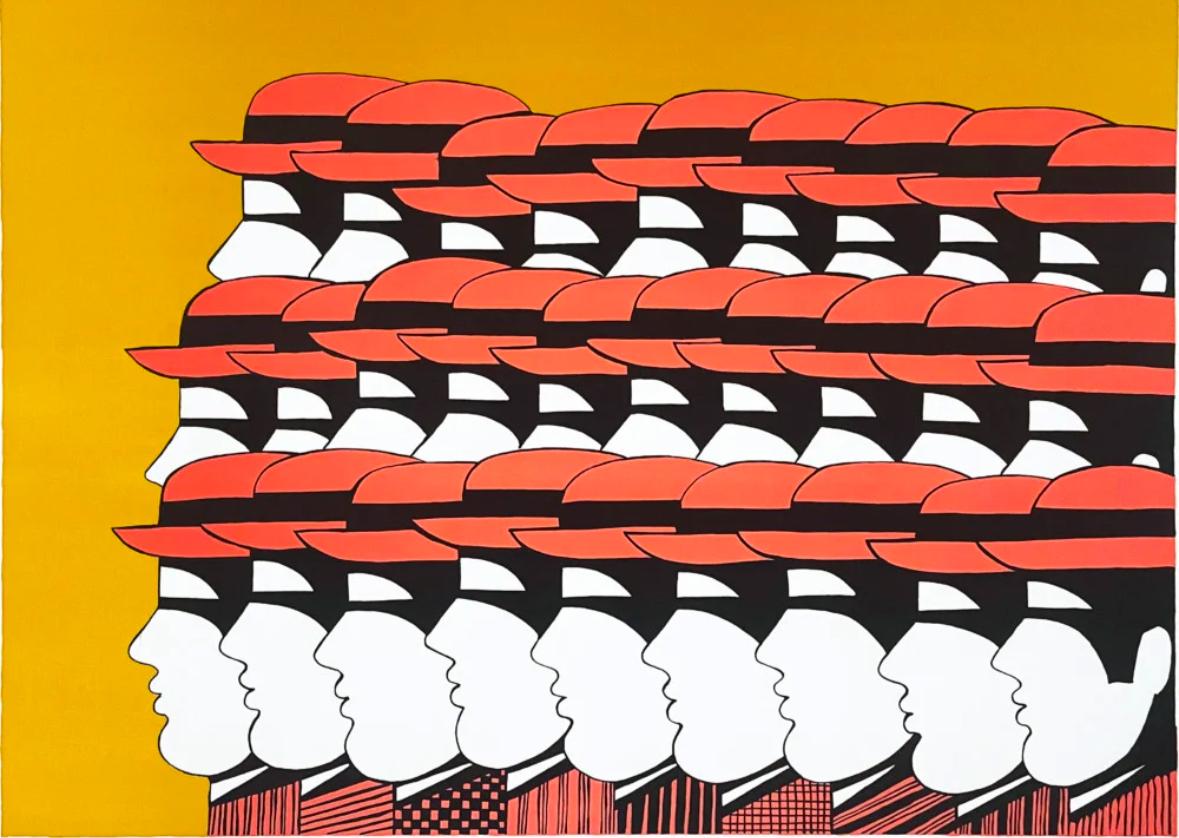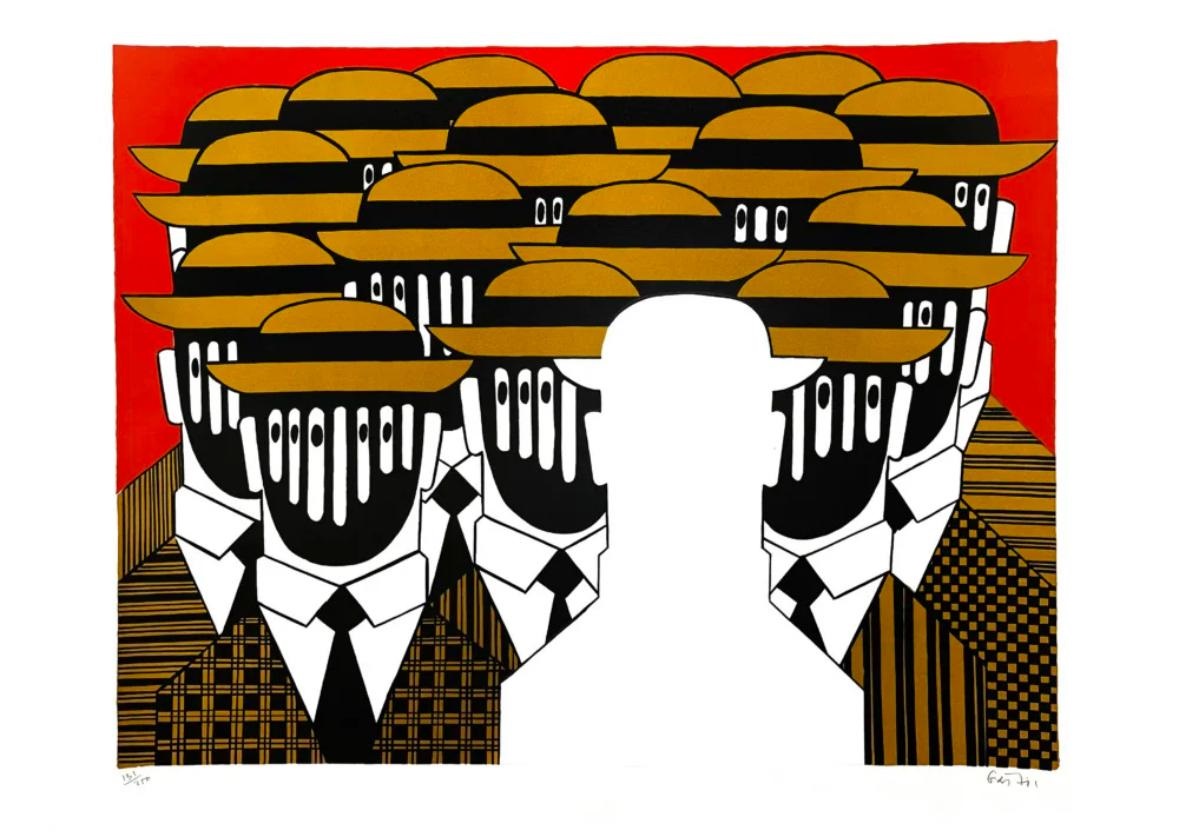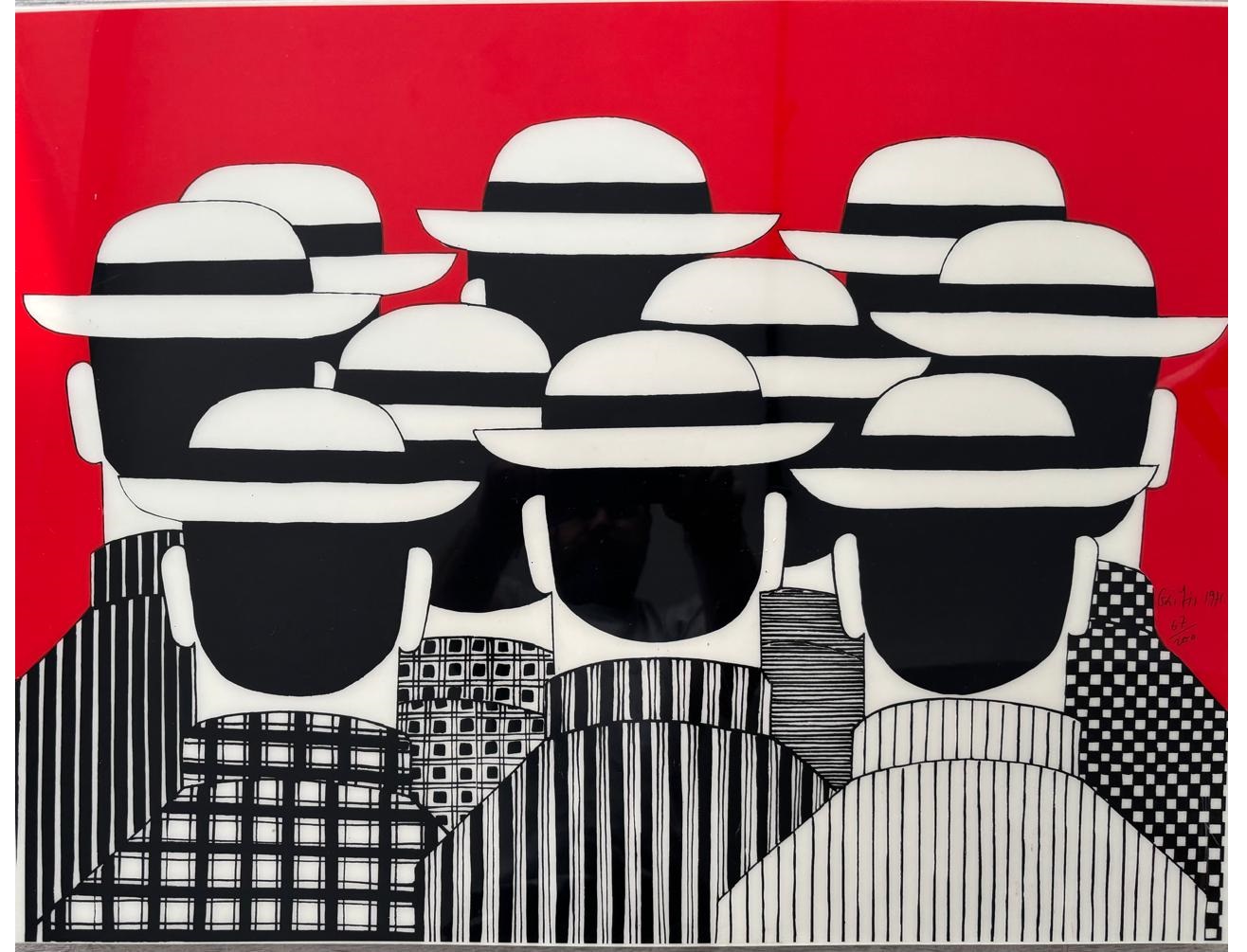Bio
Painter and sculptor Yannis Gaïtis’s depictions of identical male figures speak to what he saw as the alienation and homogenization of male identity in the 20th century.
In 1968, Gaïtis introduced his signature motif: the “little man,” a stylized and archetypal male figure in a jacket, tie, and hat that has become one of the most recognizable ideograms of modern Greek art.
Using just black, white, and primary colors, he humorously critiqued the impacts of automation and global capitalism on modern society with his caricature-like men in plaid or striped suits. Gaïtis was a founding member of Alekos Kontopoulos’s Oi Akraioi (The Extremes) group, which eschewed academic realism, then still the popular artistic style in Greece.
Instead, he and his contemporaries enthusiastically embraced abstraction and other developments in modern art, including Pop art.
Painter and sculptor Yannis Gaïtis’s depictions of identical male figures speak to what he saw as the alienation and homogenization of male identity in the 20th century.
In 1968, Gaïtis introduced his signature motif: the “little man,” a stylized and archetypal male figure in a jacket, tie, and hat that has become one of the most recognizable ideograms of modern Greek art.
Using just black, white, and primary colors, he humorously critiqued the impacts of automation and global capitalism on modern society with his caricature-like men in plaid or striped suits. Gaïtis was a founding member of Alekos Kontopoulos’s Oi Akraioi (The Extremes) group, which eschewed academic realism, then still the popular artistic style in Greece.
Instead, he and his contemporaries enthusiastically embraced abstraction and other developments in modern art, including Pop art.















